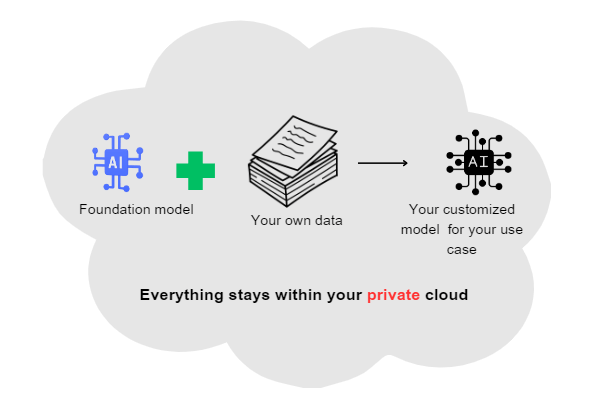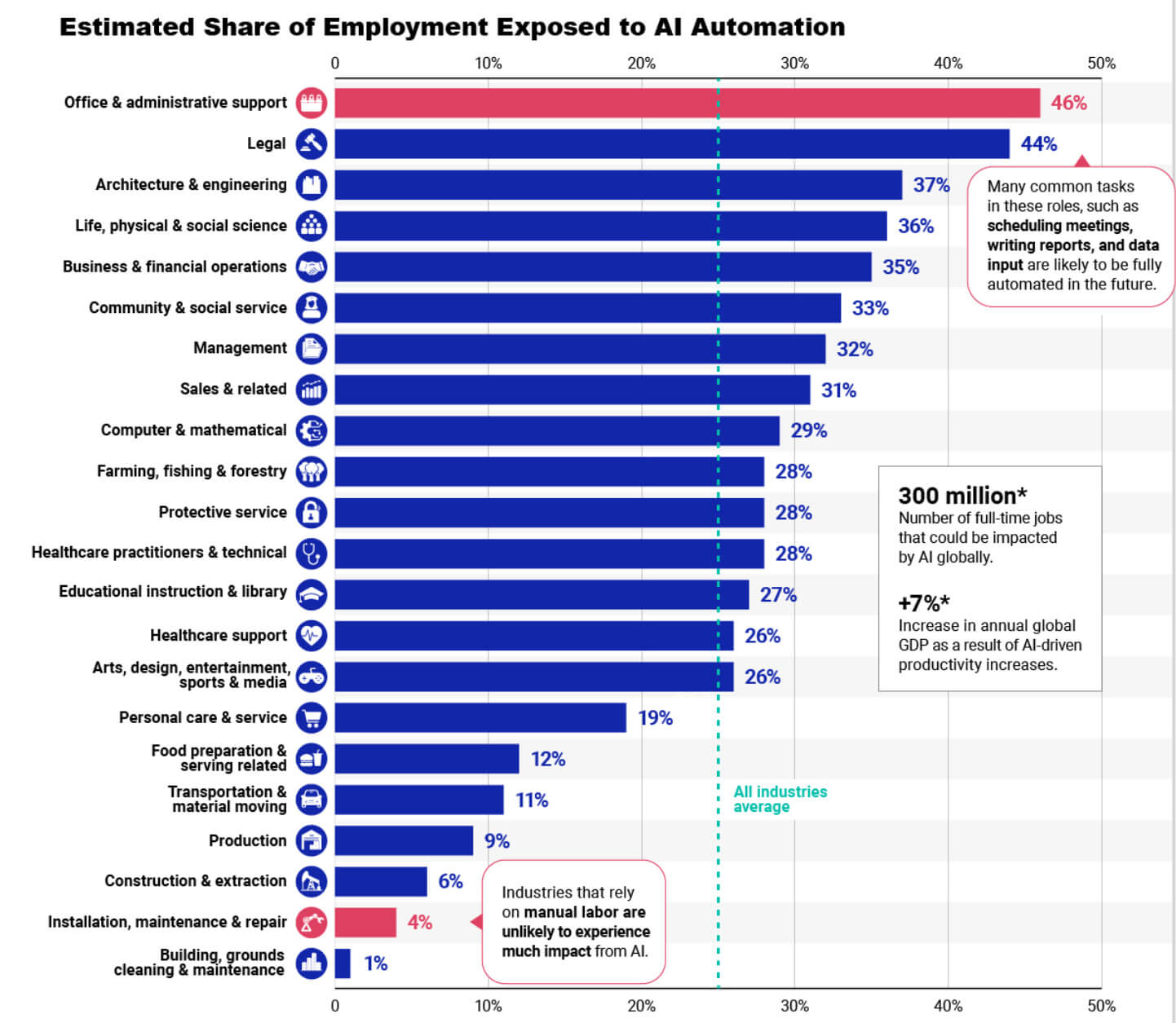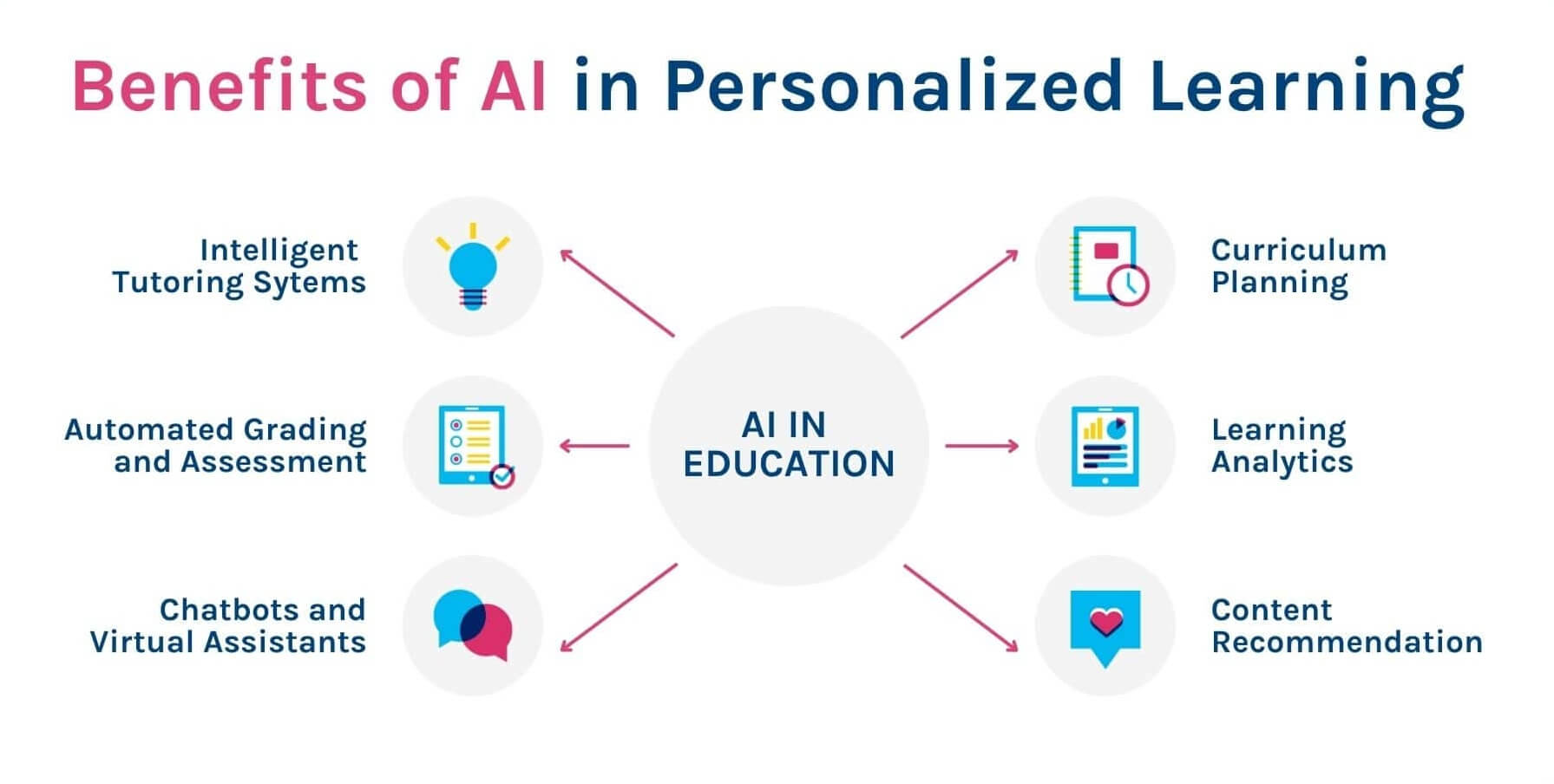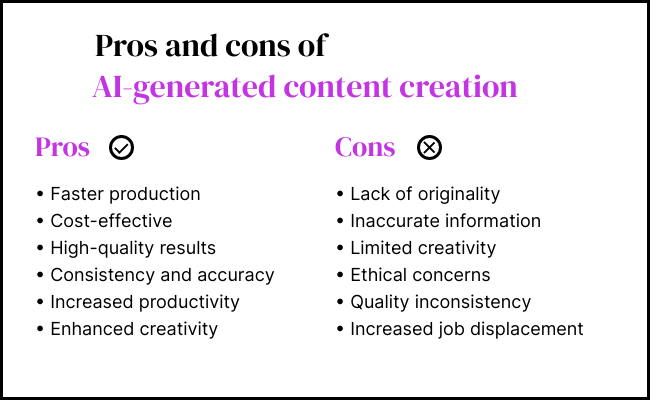
7 AI predictions for 2024 🔮🌟
22 January, 2024
In the relentless march of technological progress, one acronym stands out: AI, the buzzword that has dominated headlines and conversations alike. The past year witnessed a seismic shift, marking it as the Year of Generative AI Breakthrough. From ChatGPT to Gemini, large language models and AIs have seamlessly woven themselves into the fabric of our daily lives, transforming into indispensable tools for millions. With a staggering 44 percent of companies gearing up for substantial AI investments, and tech behemoths like Google, Apple, Microsoft, and Amazon leading the charge with multi-billion-dollar commitments, it's evident that AI is not just a trend; it's a transformative force.
In this article, we'll delve into the unfolding landscape of AI, unveiling the trends that promise to shape 2024.
Opensource AI Will Outperform Private Models
For years, tech giants like Google, Amazon, Microsoft and others have raced to develop the most advanced AI by investing billions into private research teams. But a new trend is emerging that suggests the future of artificial intelligence may not come from any single company - it may come from all of us working together.
Open source artificial intelligence has grown tremendously in recent years, with projects like BERT, GPT-3 and more making state-of-the-art NLP models freely available to all. What started as a way to accelerate research has turned into a full-fledged open collaboration between scientists around the world.

By leveraging the collective contributions of thousands of independent researchers, open source models are advancing at an incredible pace. The power of many minds tackling challenges from different perspectives cannot be overstated. Projects develop new techniques faster when ideas and findings are shared openly.
What's more, these public models are able to learn from vastly more data than any single organization. By training on the entire breadth of online text and knowledge, their capabilities far exceed what limited proprietary datasets allow. Scale truly is power in the world of deep learning.
The synergies between open source projects create compounding returns as well. Advances in one area, like computer vision, crossover to spur complementary progress elsewhere like natural language. Teams seamlessly build upon each other's work in a virtuous cycle of constant improvement. So while private companies pour billions into narrowing specialized focuses, the open source community is working together on an exponentially larger stage. Their combined efforts are aligning to surpass any single player through the openness and scale of collaborative AI.
Models Come to the Masses via CPU almost for Free
Cutting-edge AI was confined to the powerful GPU servers of large tech companies. Ordinary individuals and businesses had to rely on paid API access or partner with specialists to leverage new technologies. But a quiet revolution is now underway that promises to change all that.

Thanks to innovations in model compression and hardware optimization, state-of-the-art neural networks can now run surprisingly well even on lower-powered devices like smartphones, embedded systems, and desktop CPUs. Thanks to breakthroughs in model compression by Apple's own AI research division, the latest computer vision and NLP models can now run near natively on the iPhone's CPU. One example is Vision models trained with hundreds of petabytes of image data to recognize objects and analyze scenes in real-time which previously required data center hardware, can now perform just as accurately using less than 1% of the resources on a phone's processor.
This means the latest advancements in areas like computer vision, natural language processing and more will finally make the leap from research labs directly into the hands of regular users. No longer will low-cost access depend on costly third-party APIs or specialized hardware. AI is about to get vastly more accessible and affordable for all.

Entrepreneurs will gain the ability to independently deploy sophisticated models within their own applications and services without exorbitant OTT costs or platform lock-in. Individuals will be empowered to build innovative tools for personal productivity and fun using leading-edge techniques. Even resource-limited IoT devices will benefit from new capabilities.
And in what may be the most significant change, AI skills and knowledge will spread far beyond tech giants to the global community. Rather than a black box only the largest organizations can tap, artificial intelligence will truly become an open people's technology. With AI's potential now within reach of all programmers and makers, its positive impact has nowhere to go but up. An exciting new chapter in accessible innovation is on the horizon.
AI is Expanding Workforce Opportunities
While AI often sparks fears that robots will replace human jobs, the reality is that artificial intelligence is serving to expand workforce opportunities rather than diminish them. As AI capabilities continue to advance, the types of roles and skills companies need are evolving right along with it.
Far from eliminating the need for human workers, AI is creating new domains of work and allowing people to be more productive and effective in their jobs. One estimate is that by 2033, AI solutions will result in over 500 million net new human jobs worldwide. AI will launch innovative new products and services, spurring new small business and startup opportunities. The commercialization of AI research will fuel new markets and the associated job growth.

One way AI is bolstering opportunities is by generating demand for new roles like AI engineers, safety engineers, and data scientists to develop, implement and work alongside AI technologies. Companies like Anthropic, OpenAI, and DeepMind now employ large teams to research how AI can benefit areas such as healthcare, education and sustainability. As more industries adopt AI, these application areas will create many career paths.
AI is also enhancing existing jobs. Accountants at PwC now use AI to automate routine data entry, allowing more time for complex analysis. Graphic designers at Atomic are trialing AI tools to generate initial design concepts, freeing them up for more conceptual work.
Additionally, AI promises an equalizing effect. Tools from Anthropic and Startup Bridges help retrain workers for in-demand roles, regardless of background. AI may also open doors for those with disabilities by taking over physical or repetitive tasks.
Customer service representatives can now use AI chatbots to handle basic inquiries, focusing on more nuanced problems. Healthcare professionals also spend less time on administrative tasks and data entry with AI, allowing more hours for critical patient care.
The Future of Coding is Natural Language
Programming has long required developers to learn complex syntax-focused languages like Python, Java, and C++. But what if coding could be done in plain English instead? Advances in AI may soon make that a reality, bringing the power of software development to many more people.
Researchers at Anthropic are working on a system called Constitutional AI which allows users to write programs by conversing with an AI assistant in natural language. For example, a user could say "I want to make a weather app that tells the user the forecast when they open it. Here are the steps: 1) Get the user's location. 2) Lookup the forecast for that location from a weather API. 3) Display the forecast information to the user." The AI would then be able to generate the equivalent code in a traditional language automatically.

Natural language interfaces could simplify debugging as well. Instead of sifting through logs and print statements, a programmer could ask an AI "what is causing this error?" Or "how can I make this part of the app run faster?" The system would analyze the code, try to diagnose the issue, and provide suggestions or even fix it directly through natural conversations.
Many see this as a way to open up programming to demographics that might otherwise be excluded due to syntax complexity barriers. Citizens without formal coding education could build useful tools for their communities just by explaining what they want to accomplish in plain terms. Entire new types of "citizen developers" may be born through this more intuitive creative medium.
While technical challenges remain, the potential of natural language programming is immense. By making the thought process of coding more human, we may see an explosion of novel applications and many new problem solvers entering the field to drive further innovation through easier creation.
The Promise of Personalized Learning for All
As AI infiltrates classrooms, one of the most exciting developments is its ability to truly tailor education for each individual learner. Today's initial AI teaching tools are already demonstrating how powerful personalization can be - assessing students' strengths and challenges in real-time, then adapting lessons accordingly through dynamic feedback.
But the future of AI-enhanced learning goes even further. Imagine if software could understand fine-grained differences in how each person learns best - some prefer visual examples while others need verbal explanations, for instance. Lesson plans and study materials could then be micro-customized down to the video clips, activities and practice problems provided to precisely suit an individual's needs.

This level of tailored support has the potential to close achievement gaps that persist in traditional one-size-fits-all schooling. With AI education available anywhere through online and mobile delivery, it could also ensure equal access to high-quality personalized instruction no matter a student's location, economic circumstances or available local resources.
Rather than being limited by their geographical situation or available teachers, all learners will gain empowerment through education personalized just for them. Software could even dynamically modify its approach for each person over time based on ongoing assessments, keeping lessons continually matched to maximize retention and engagement as learning styles evolve.
When combined with each student's unique culture, interests and preferred learning pace, AI's ability to deeply understand and nurture the individual may be transformative. True equitable learning opportunities for all may at last become possible through technology that meets every person where they are. A future of learning personalized down to the level of one holds immense potential.
AI is Revolutionizing Content Creation through Video Production
The way brands and creators develop video content has entered a new era. No longer will sheer manpower and resources be the sole determinant of production prowess. A powerful new ally is emerging to multiply what's possible—and its name is artificial intelligence.

Led by innovative tools for script generation, character modeling, editing workflows and more, AI is taking its first meaningful steps into the content creation process. Early adopters in 2023 are already seeing the massive potential to streamline tedious operations through automation.
This frees the creative class to focus on human nuances no algorithm can match. But mere efficiency gains are just the start. As collaboration models evolve, the line between human and artificial talent will blur entirely to new effect.
Far from a hypothetical future, AI-powered content innovation is already underway. Anthropic helped LaunchDARK develop AI-animated ads with photorealistic virtual characters. Their human-AI tandem cut months off production. Chipotle tested AI-crafted social videos to prototype new concepts faster than live-action equivalents. Shortcuts like virtual set design and automated subtitles supercharged ideation. Lexus leveraged AI to automatically generate personalized mini-movies from customer profile data at scale. Their hyper-targeted approach drove showroom traffic up 30%.
Those who embrace AI not just as a tool but as a creative partner will find their limits expanded in ways unfathomable just a few years ago. Blockbusters may emerge from unexpected corners as production power decentralizes.
Content 2.0 has arrived, and it promises to upend conventions through the marriage of human imagination and machine intelligence. This new era will see video blossom in forms and at scales to captivate audiences like never before. For brands and storytellers alike, the future has never looked so bright.
AI to the Rescue the Next Revolution in Medicine and Drug Discovery
Traditional process of discovering new drugs has relied on trial and error - chemists churning out millions of compounds in hopes a few may have the right properties. But an AI revolution is coming that could transform medicine by supercharging every step of the journey to new cures.
Using massive datasets and machine learning, AI is already generating novel molecule designs with desirable characteristics faster than any human. With a simple prompt like "Generate molecules effective against cancer but safe for humans", creative AI spits out thousands of potential wonder drugs.

From there, in-silico testing rapidly predicts each candidate's properties, interactions and efficacy through protein modeling and simulation at the molecular level. AI forecasts which few have the best chances to work - an incredible improvement over haphazard testing in animals or humans.
But AI's role doesn't stop at simulation. “Intelligent labs” now let AI autonomously run physical chemistry experiments based on its virtual results, learning from each cycle. It identifies optimal synthesis routes, manages bench robots 24/7, and suggests tweaks to promising molecules undergoing real-world trials.
The future will see AI integrated throughout drug R&D as an expert collaborator. Its superhuman speed, lack of bias and automated discovery processes could find cures for diseases that have stumped us for centuries. Never has hope been higher that AI will usher in a new golden age of revolutionary treatments to enhance all our lives. Where human ingenuity meets machine intelligence, who knows what medical miracles await?
Creating the Future with Technology
As we navigate the landscape of 2024, it's clear that the symbiotic relationship between humans and AI is reaching new heights. Anticipated to be a year of unprecedented integration, AI is set to touch every facet of our lives, from career advancements to community dynamics and national progress.
The growing euphoria around AI is not merely hype; it's a tangible force, with tech companies poised to reap the benefits. As the AI revolution continues to unfold, 2024 promises a future where the extraordinary capabilities of artificial intelligence become an integral part of the human experience.